Health Informatics Assignment: Patient Health Records and EHRs
VerifiedAdded on 2021/04/16
|5
|733
|46
Homework Assignment
AI Summary
This assignment delves into the realm of health informatics, specifically focusing on the usability benefits and challenges associated with personal health records (PHRs) and patient portals. It addresses the advantages of patient portals, such as improved patient-provider communication and easy access to health data, while also highlighting the critical concern of data security and potential breaches by hackers. The assignment explores accessibility and usability issues within health informatics applications, emphasizing the need for robust security safeguards like password protection and data encryption. Furthermore, it examines how PHRs and patient portals facilitate patient education, transparency, and inclusion in healthcare, while also acknowledging potential limitations in patient access to comprehensive electronic health records (EHRs) and medication information. The student references several academic sources to support their arguments.
1 out of 5
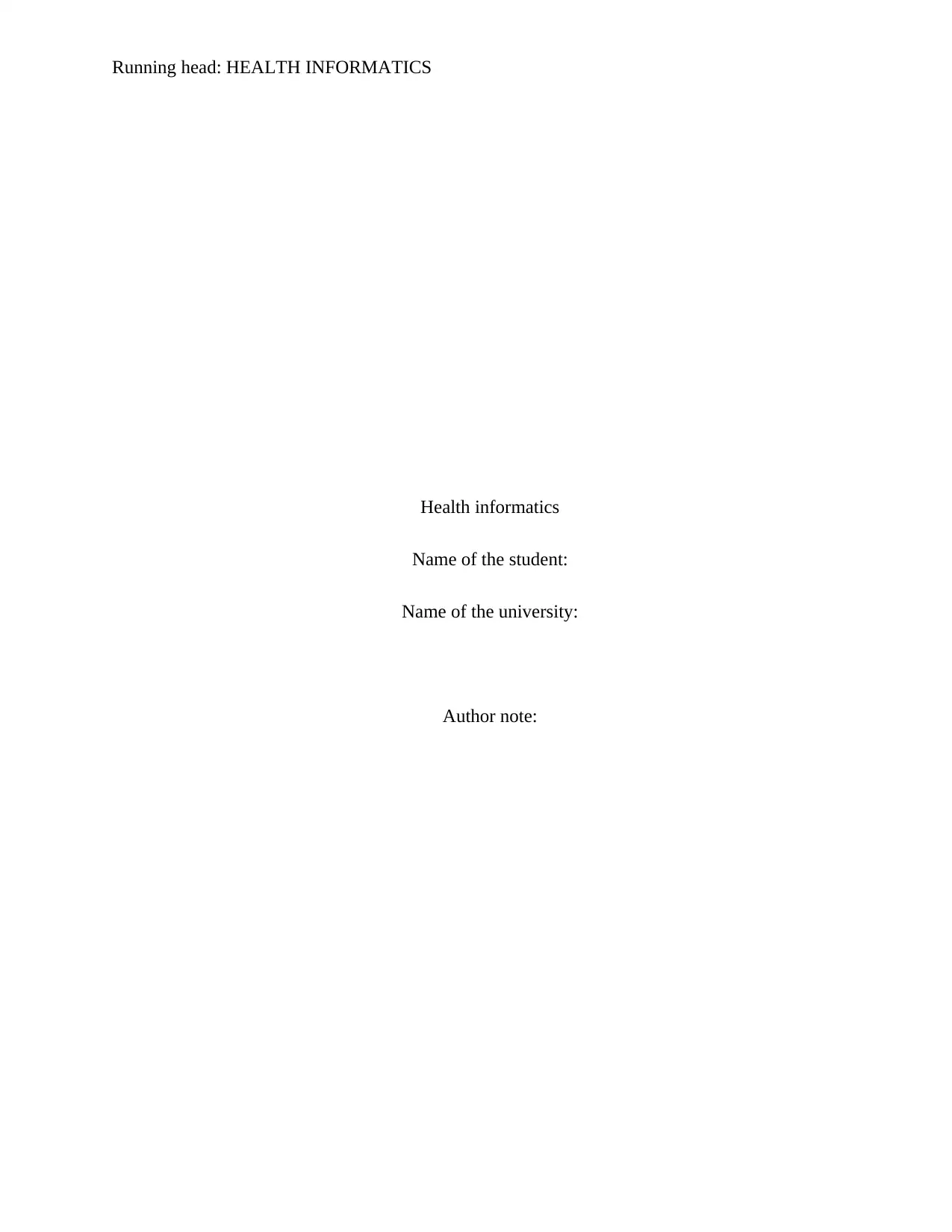
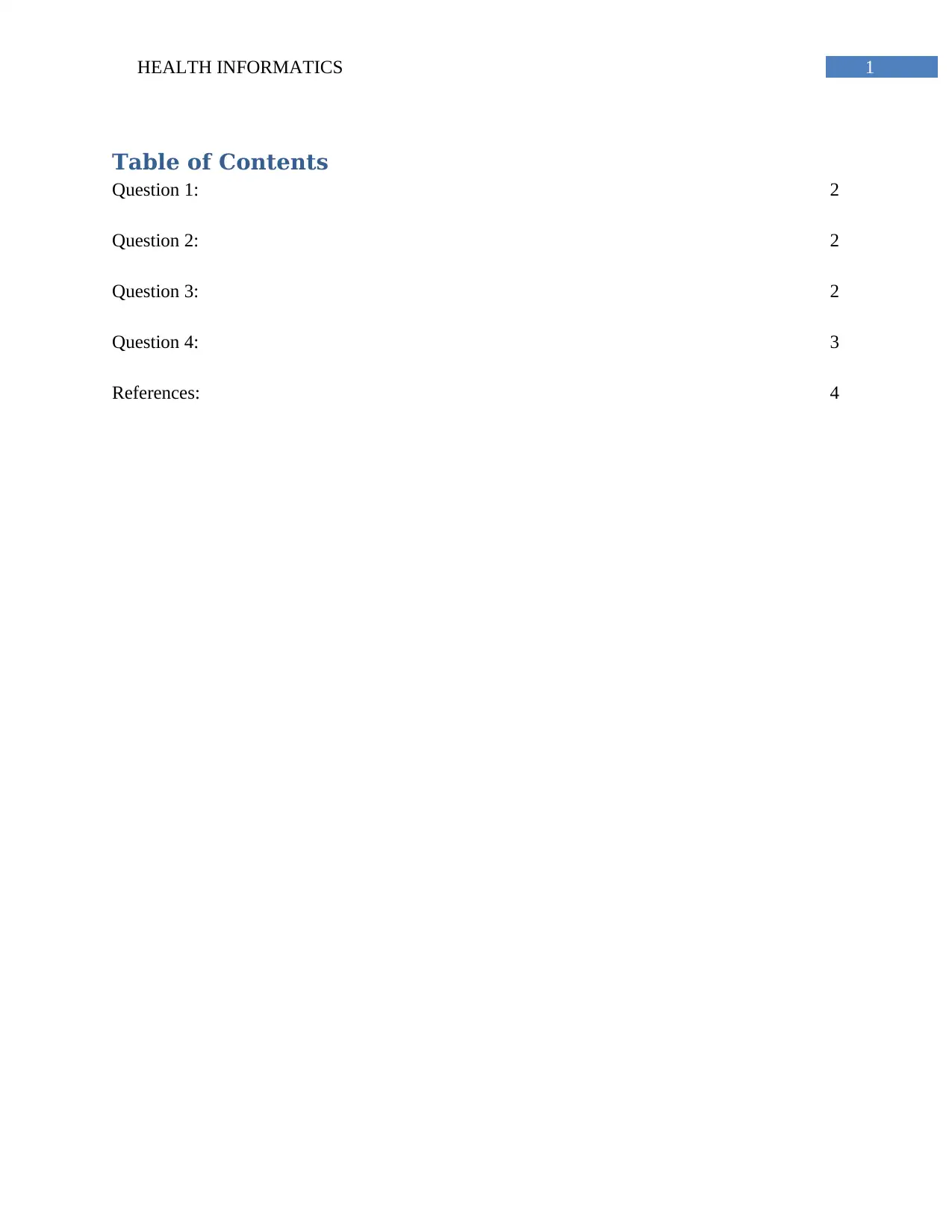
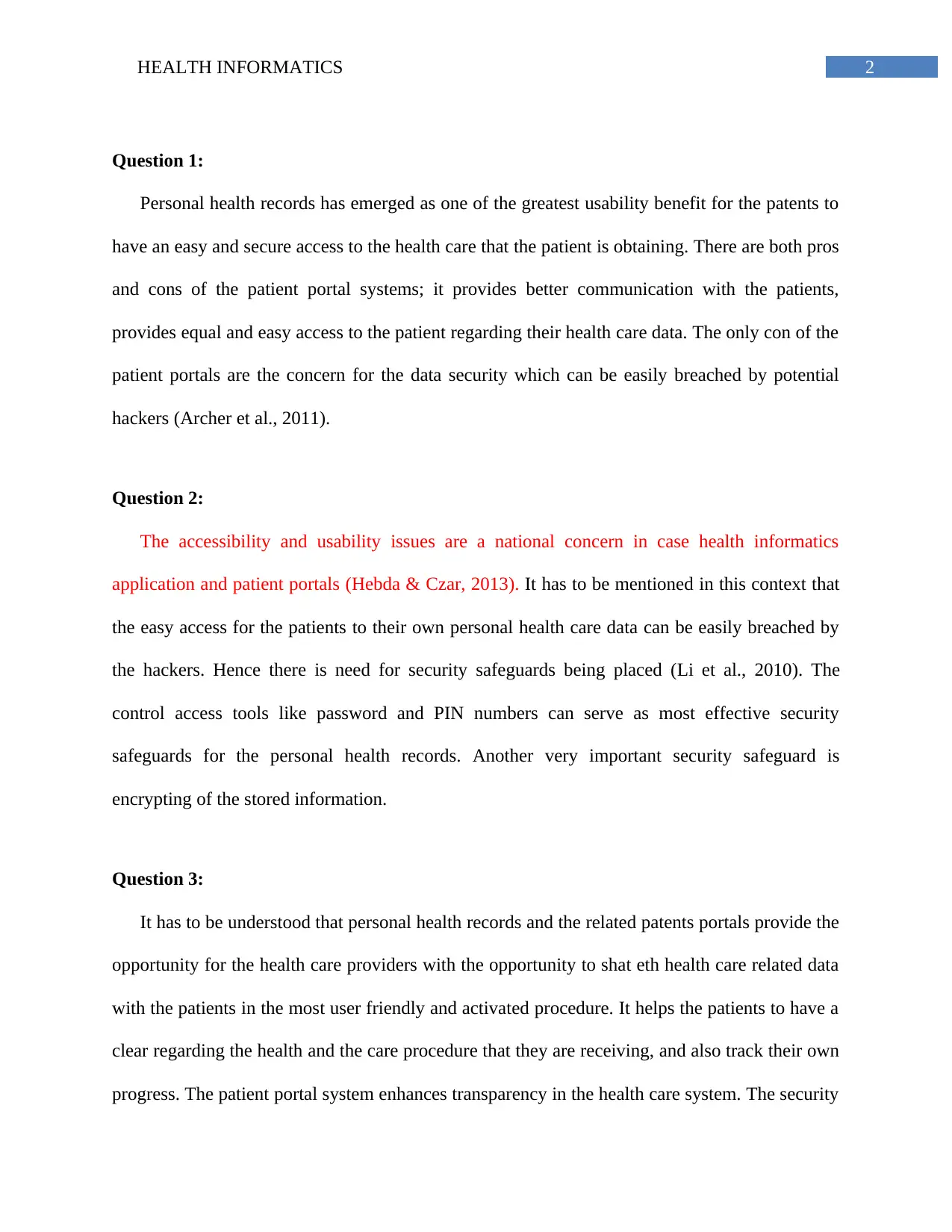

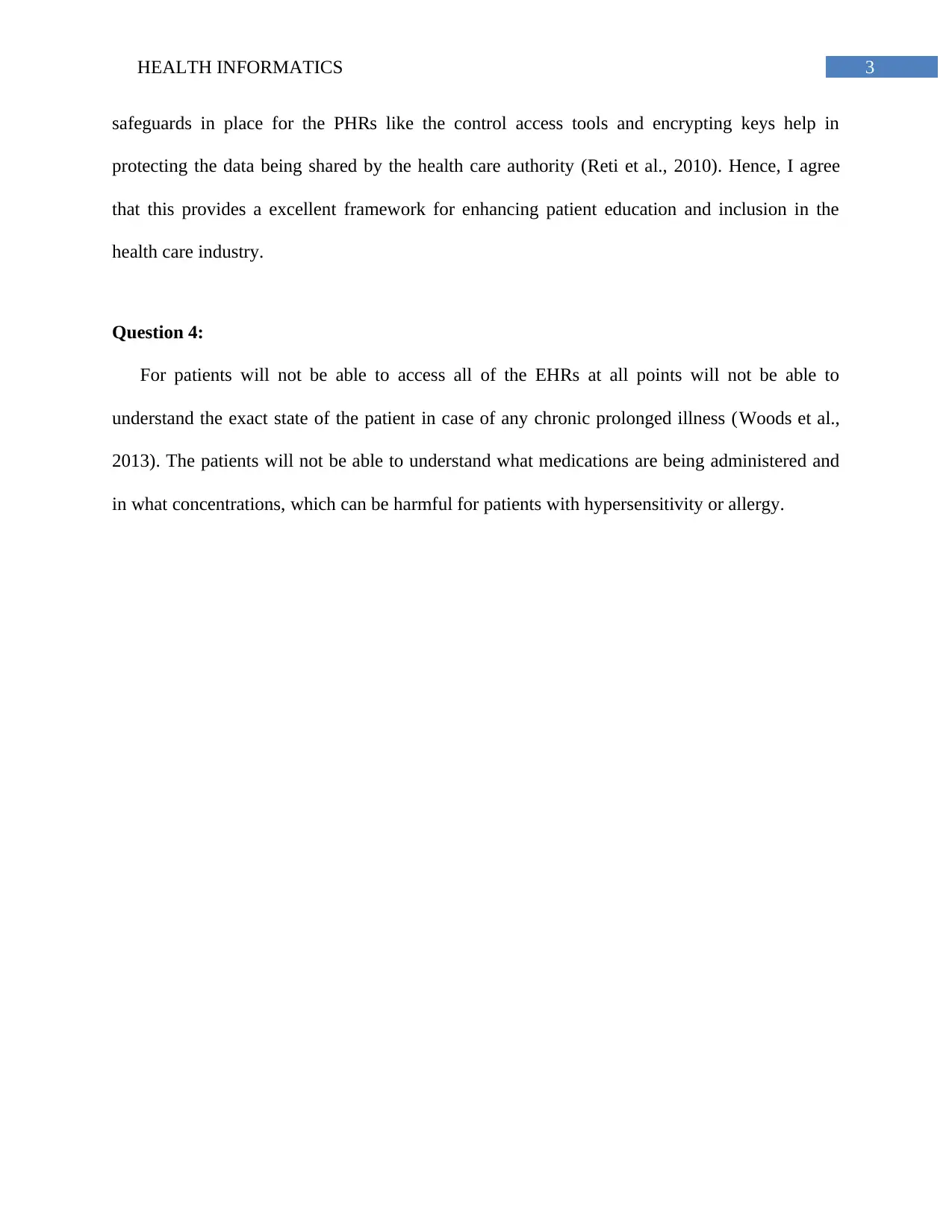
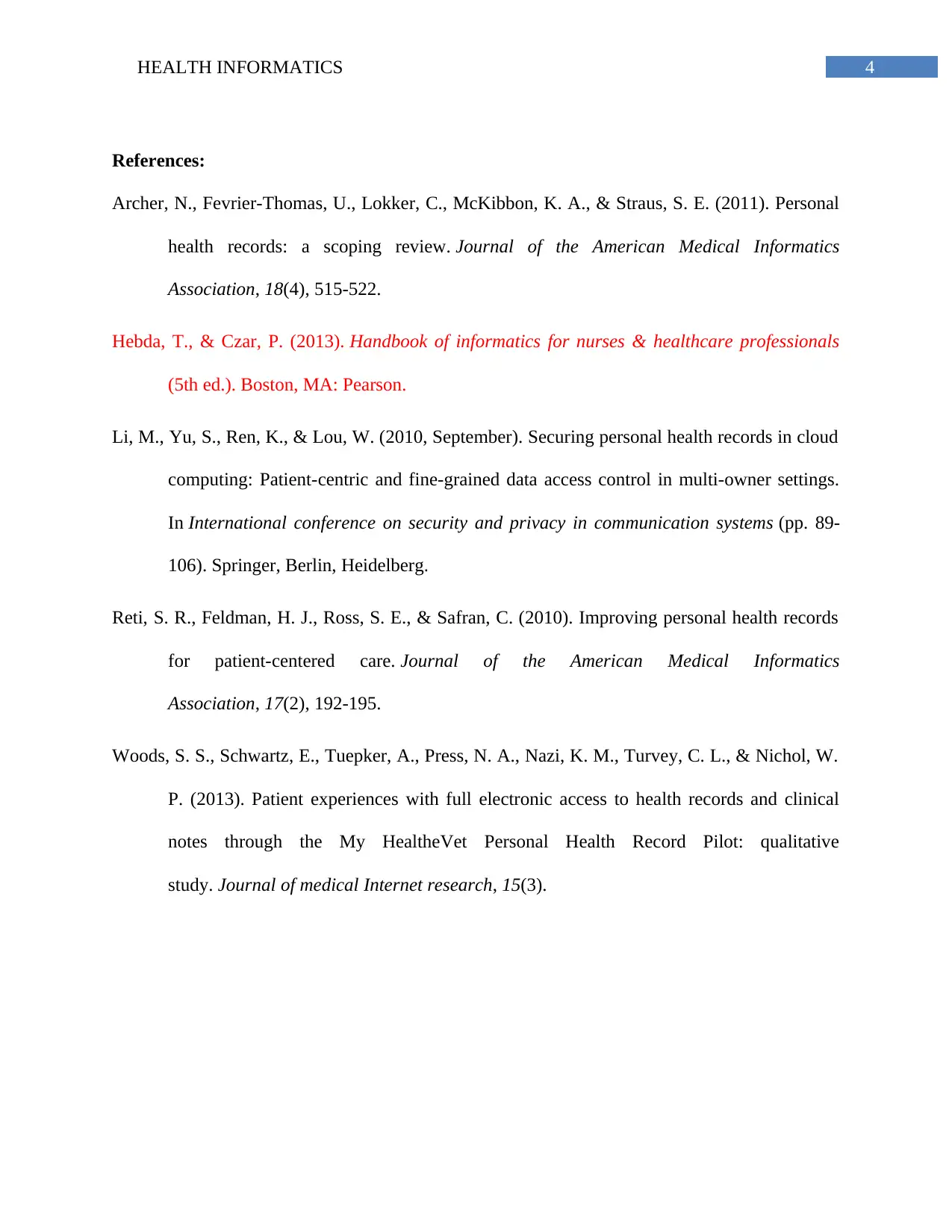






![[object Object]](/_next/static/media/star-bottom.7253800d.svg)